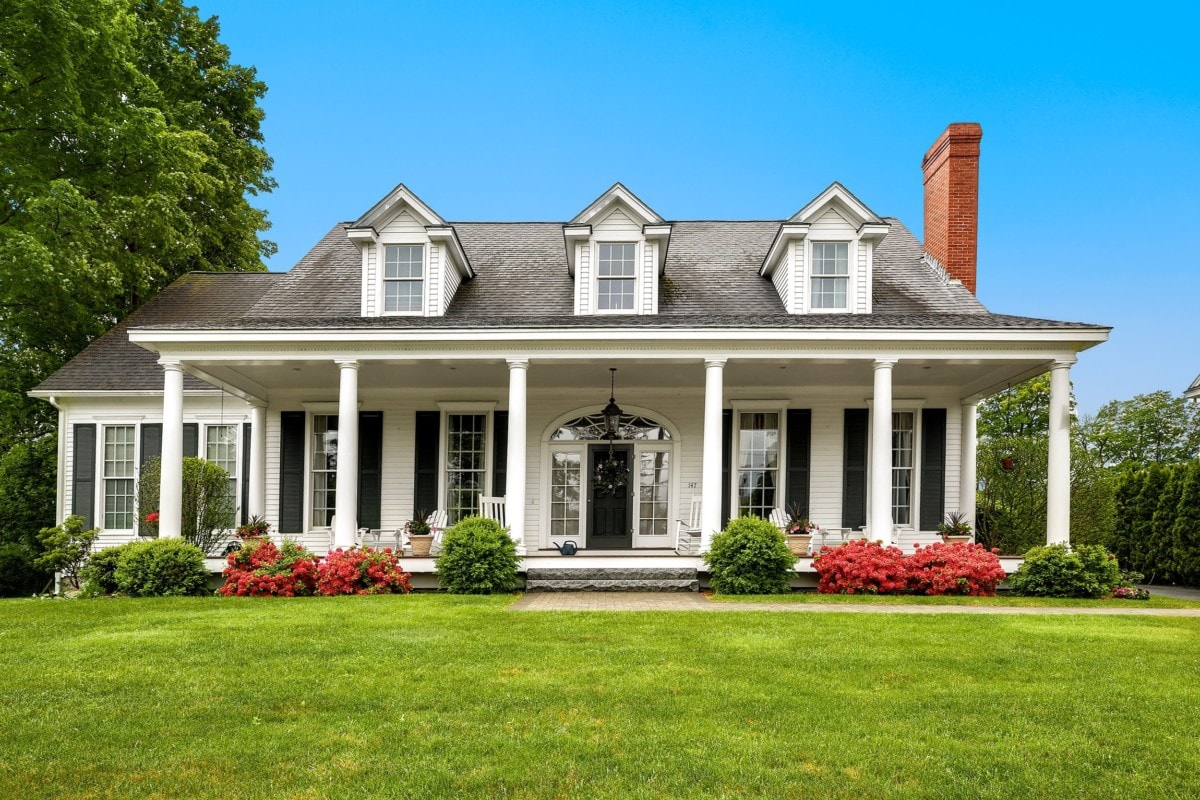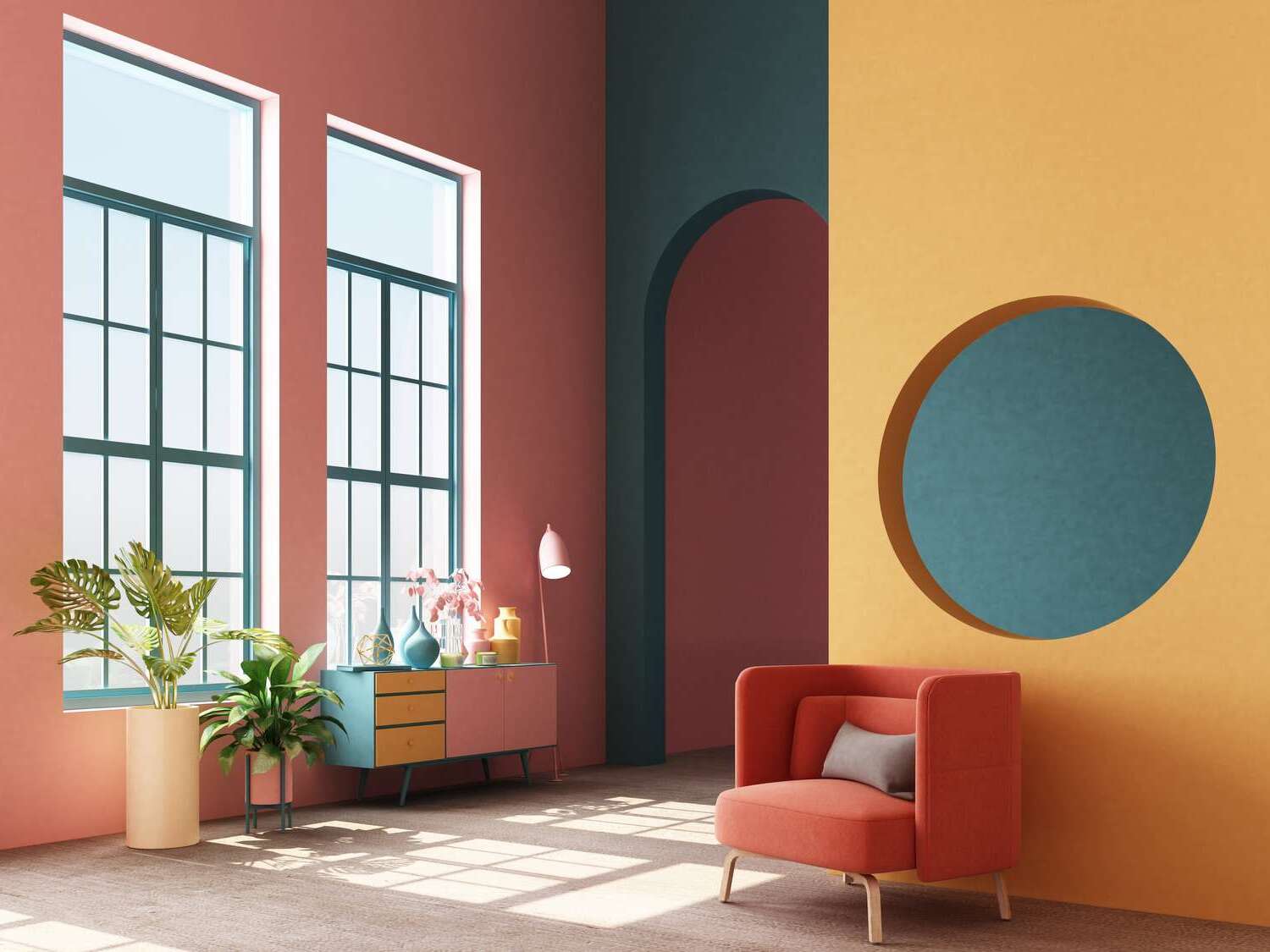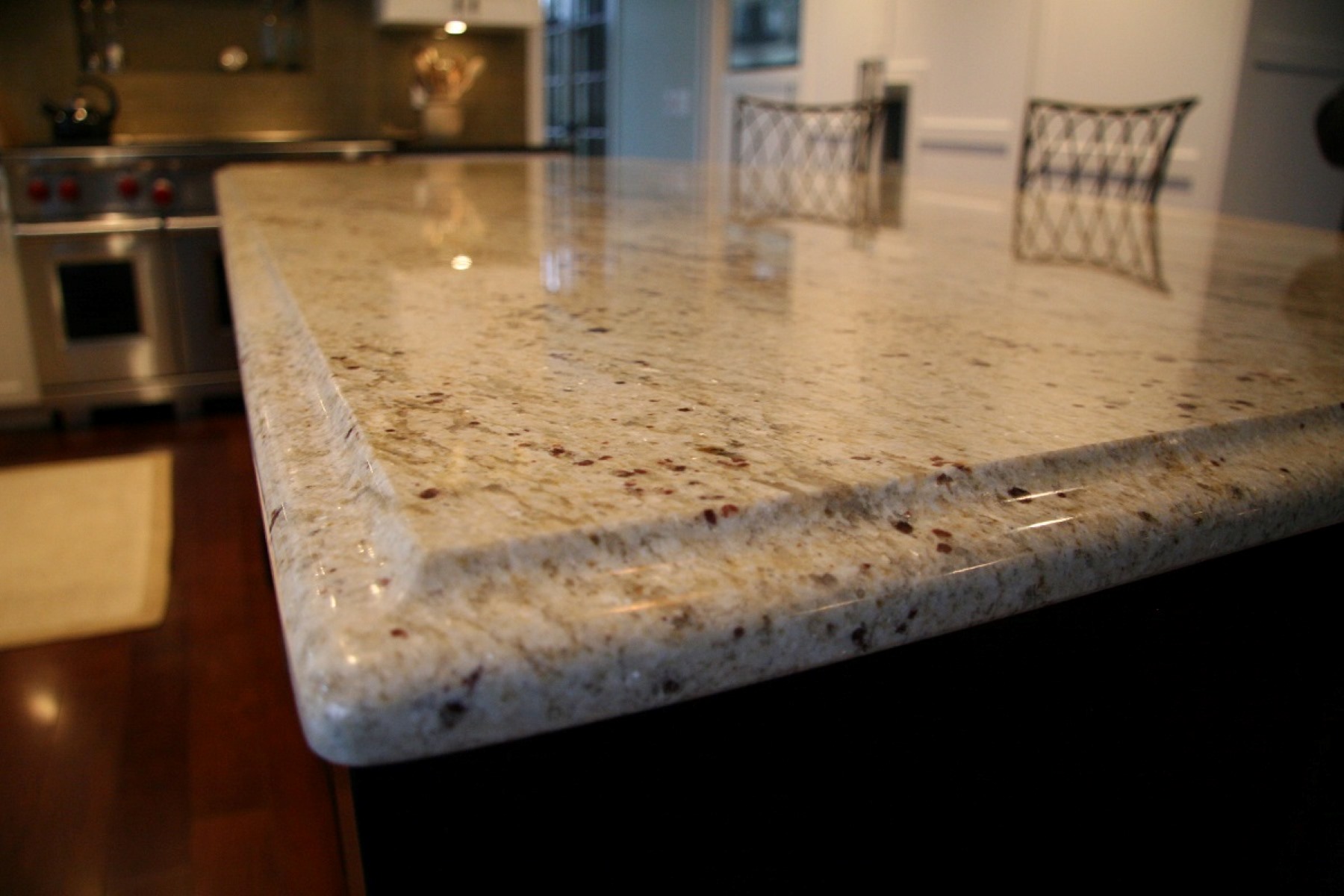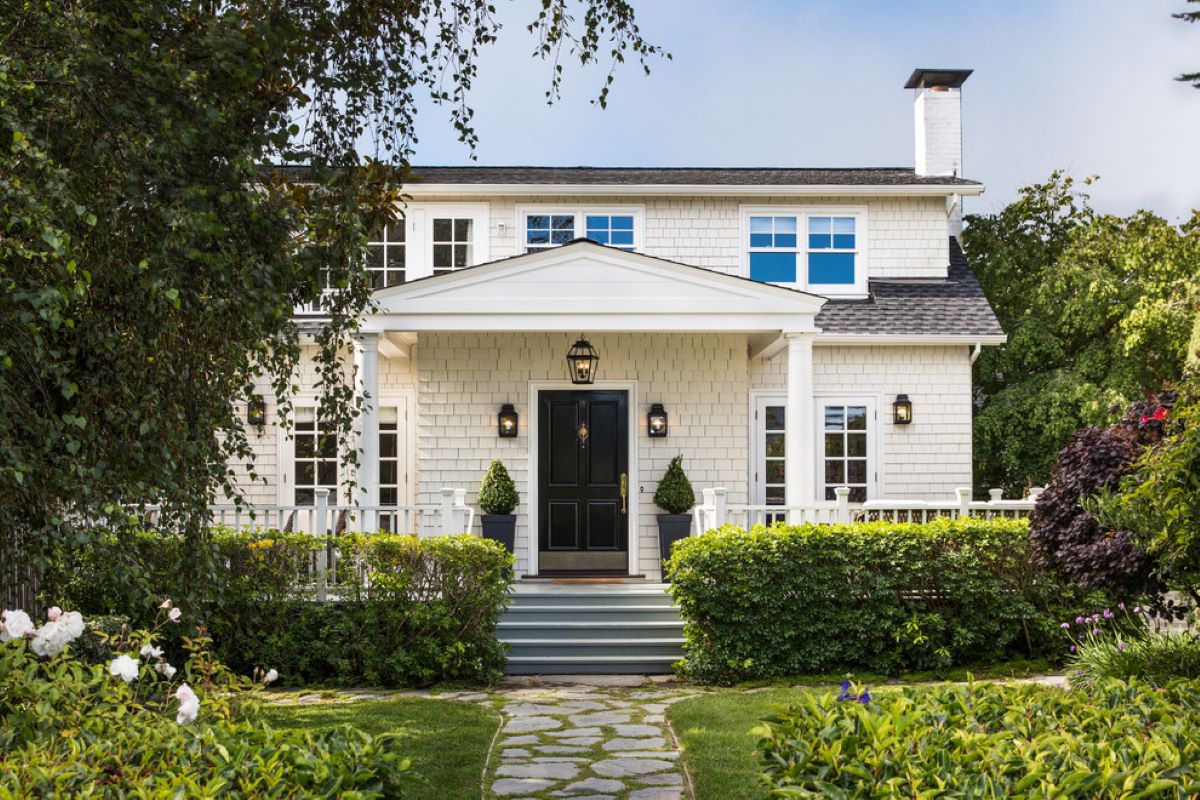Home>Articles>Here’s What Distinguishes The Most Popular American House Styles


Articles
Here’s What Distinguishes The Most Popular American House Styles
Modified: August 27, 2024
Discover the key features of the most popular American house styles in this informative series of articles. Gain insights into their unique architectural elements and design influences.
(Many of the links in this article redirect to a specific reviewed product. Your purchase of these products through affiliate links helps to generate commission for Storables.com, at no extra cost. Learn more)
Introduction
When it comes to American house styles, there is a rich and diverse architectural heritage that reflects the country’s history and culture. From the classic forms of colonial and Victorian houses to the sleek lines of modern and mid-century modern designs, each style has its own unique charm and appeal.
Understanding the distinguishing features of these popular house styles can help homeowners and enthusiasts appreciate the aesthetics and functionality of different architectural designs. Whether you’re looking to buy a new home or simply have an interest in American architecture, this article will guide you through the key characteristics of the most prevalent house styles in the United States.
From the colonial period to the present day, American house styles have evolved and adapted to the changing times and tastes. Each architectural style has its own set of distinguishing features, including exterior design elements, rooflines, window styles, and interior layouts.
Over the years, some house styles have become synonymous with specific regions or periods in American history, while others have gained popularity nationwide. This article explores ten of the most popular American house styles, highlighting their key features and iconic elements.
Read on to discover the unique characteristics of colonial, Victorian, Craftsman, Tudor, modern, mid-century modern, ranch, farmhouse, Cape Cod, and Mediterranean styles. By understanding the details that differentiate these architectural styles, you’ll gain a deeper appreciation for the rich tapestry of American residential design.
Key Takeaways:
- Discover the rich tapestry of American house styles, from the timeless elegance of Colonial and Victorian to the simplicity of Ranch and Farmhouse designs. Each style reflects history, culture, and unique charm.
- Uncover the architectural inspiration that shapes American homes, from the ornate details of Victorian architecture to the sleek lines of Modern design. Each style offers something for every homeowner’s vision and lifestyle.
Colonial Style
The Colonial style is one of the oldest and most iconic house styles in America. Originating from the early European settlers, particularly the English, this architectural style is characterized by its symmetry, formal design, and classic elements.
Colonial houses typically feature a rectangular shape with a central chimney and a steeply pitched roof. The facades are often adorned with symmetrically placed windows and a centered front door. The exteriors are usually made of brick, stone, or wood siding, which exudes a timeless and elegant charm.
Inside a Colonial house, you’ll find a formal layout with rooms arranged in a straightforward and logical manner. The central hallway, known as the “center hallway plan,” leads to the various rooms in the house. The design encourages a sense of order and balance.
One of the distinctive features of the Colonial style is the use of decorative detailing around the front entrance, such as intricate pilasters, pediments, and fanlights. These elements add a touch of sophistication and create a welcoming entrance to the home.
The interior of a Colonial house often showcases classic details such as crown molding, chair railings, and wainscot paneling. These architectural features contribute to the overall elegance and refinement of this style.
Some popular subtypes of the Colonial style include the Georgian Colonial, Federal Colonial, and Dutch Colonial. Each subtype has its own unique characteristics and regional influences, but they all share the same underlying Colonial design principles.
Whether you’re walking through the historic neighborhoods of New England or exploring the streets of the Southern states, you’ll likely come across many well-preserved examples of the Colonial style. Its timeless appeal and historical significance make it a beloved architectural style in America.
Victorian Style
The Victorian style is a lavish and ornate architectural style that emerged during the reign of Queen Victoria in the mid to late 19th century. This style is known for its elaborate detailing, vibrant colors, and eclectic mix of architectural influences.
Victorian houses are often characterized by their asymmetrical facades, steep roofs, and decorative trim. They can range from small and modest cottages to large and opulent mansions, each showcasing its own unique design elements.
One of the defining features of Victorian architecture is the use of intricate ornamentation. Elaborate woodwork, known as “gingerbread,” can be found on the exterior of Victorian homes, including brackets, spindles, and decorative trim. These decorative elements add visual interest and create a sense of grandeur.
Victorian houses also often feature different types of windows, including bay windows, stained glass windows, and multi-pane windows. These windows add charm and character to the home while allowing abundant natural light to enter.
The interior of a Victorian house is just as ornate as its exterior. High ceilings, ornamental plasterwork, and detailed moldings are commonplace. The rooms are often spacious and showcase intricate wallpaper patterns, richly patterned carpets, and decorative light fixtures.
There are several subtypes of Victorian architecture, including the Queen Anne style, Second Empire style, and Italianate style. Each subtype has its own unique characteristics and influences, ranging from the Queen Anne’s exuberant ornamentation to the Second Empire’s mansard roofs.
Victorian houses can be found throughout the United States, with many well-preserved examples in cities like San Francisco and New Orleans. Their distinctive character and historical significance make them a popular choice among homeowners who appreciate the elegance and charm of this architectural style.
Craftsman Style
The Craftsman style, also known as the American Craftsman or Arts and Crafts style, emerged in the late 19th and early 20th centuries as a reaction against the mass-produced, ornate designs of the Victorian era. This architectural style emphasizes simplicity, natural materials, and a connection to nature.
Craftsman houses are typically characterized by their low-pitched roofs with wide overhanging eaves, exposed rafters, and decorative brackets. The exteriors are often adorned with a combination of materials, such as shingles, stucco, and stone, creating a warm and inviting aesthetic.
One of the distinguishing features of the Craftsman style is its emphasis on handcrafted details. This can be seen in the extensive use of woodwork, including intricate paneling, built-in cabinetry, and exposed beams. These organic and artisanal elements bring a sense of craftsmanship and authenticity to the home.
Inside a Craftsman house, you’ll find an open and functional layout that promotes a sense of flow and interaction. The rooms are often connected through wide doorways and feature built-in furniture and shelving, adding to the overall convenience and practicality of the design.
The windows of Craftsman houses are typically large and simple, allowing ample natural light to fill the space. Stained glass windows are also common, adding a touch of color and artistic flair.
One of the most iconic features of Craftsman homes is the front porch. A deep, covered porch with tapered square or round columns invites residents and guests to relax and connect with the outdoors. It serves as an extension of the living space and creates a welcoming entryway.
The Craftsman style was popularized by influential architects and designers, such as Gustav Stickley and Greene and Greene. Its focus on simple, honest craftsmanship and connection to nature has made it a beloved architectural style that continues to inspire homeowners and architects today.
Tudor Style
The Tudor style, often referred to as Tudor Revival, draws inspiration from the architecture of medieval England during the Tudor dynasty (1485-1603). This architectural style became popular in the United States in the early 20th century and is characterized by its distinctive half-timbered exteriors, steeply pitched roofs, and ornate detailing.
Tudor houses often feature a combination of materials, including dark timber framing, stucco or brick infill, and stone accents. The use of exposed wood beams and decorative half-timbering creates a sense of craftsmanship and charm.
One of the main focal points of Tudor houses is the elaborate and highly decorative front entrance. Arched doorways, ornate carvings, and intricate ironwork make for a grand and inviting entrance to the home.
The windows in Tudor houses are often tall and narrow, with multiple small panes of glass, typically arranged in a diamond or rectangular pattern. Leaded or stained glass windows are also common, adding a touch of color and visual interest to the exteriors.
Inside a Tudor house, you’ll find an interior that reflects the charm and character of the exterior. Exposed wooden beams, stone fireplaces, and arched doorways contribute to the rustic and cozy atmosphere.
Some Tudor houses feature large, open living spaces, while others have a more compartmentalized floor plan with smaller rooms. Regardless of the layout, Tudor houses often prioritize a sense of warmth and intimacy.
The Tudor style gained popularity in the United States during the Arts and Crafts movement, as homeowners sought a departure from the ornate and formal Victorian architecture. The style’s unique blend of medieval-inspired aesthetics and craftsmanship appealed to those seeking a combination of history and architectural artistry.
Today, Tudor houses can be found in various regions of the United States, with notable examples in New England, the Midwest, and California. Their timeless and distinctive design continues to capture the imagination of homeowners who appreciate the historical charm and unique character of the Tudor style.
Modern Style
The Modern style, also known as Mid-Century Modern, emerged in the mid-20th century as a response to the traditional and ornate architectural styles that preceded it. This architectural style embraces simplicity, clean lines, and a focus on functionality.
Modern houses are characterized by their sleek and minimalist design. Straight, horizontal rooflines, large windows, and open floor plans are common features of this style. The emphasis is on creating a seamless flow between indoor and outdoor spaces.
Materials used in Modern houses often include steel, concrete, and glass, giving them a contemporary and industrial feel. The use of these materials allows for large expanses of windows, which not only provide natural light but also create a connection to the surrounding environment.
Inside a Modern house, you’ll find an open and airy layout. Walls are often kept to a minimum, allowing for a sense of spaciousness and flexibility in room configuration. Furniture and décor in Modern homes are typically sleek and functional, with an emphasis on geometric shapes and clean lines.
While the Modern style is associated with the mid-20th century, it has experienced a resurgence in popularity in recent years. Many homeowners are drawn to its timeless appeal, as well as its focus on sustainability and energy efficiency.
Architects such as Frank Lloyd Wright, Ludwig Mies van der Rohe, and Le Corbusier played significant roles in shaping the Modern style, with their innovative designs and forward-thinking approach to architecture.
Modern houses can be found throughout the United States, with notable concentrations in California and other regions known for their architectural experimentation. Their sleek and contemporary design continues to inspire homeowners and architects seeking a minimalist and functional aesthetic.
When identifying American house styles, pay attention to key architectural features such as roof shapes, window styles, and exterior materials to distinguish between popular styles like Colonial, Victorian, Craftsman, and Mid-Century Modern.
Mid-Century Modern Style
The Mid-Century Modern style is a subset of the Modern architectural style that emerged in the mid-20th century, roughly between the 1940s and 1960s. It is characterized by its clean lines, open spaces, and integration with nature, reflecting the optimistic and forward-thinking spirit of the post-World War II era.
Mid-Century Modern houses often feature a single-story or low-pitched roof with large windows that blur the boundaries between indoor and outdoor spaces. The use of natural materials, such as wood, stone, and glass, creates a seamless blend with the surrounding environment.
One of the prominent features of Mid-Century Modern architecture is the emphasis on open floor plans that promote a sense of flow and connectivity. The interiors are often characterized by spacious and flexible living areas, with minimal or no partition walls separating different functional spaces.
Another key element of the Mid-Century Modern style is the incorporation of organic shapes and forms. This can be seen in the iconic furniture designs of the era, such as Eames chairs and Saarinen tables, which feature smooth curves and natural materials.
The use of innovative building materials and construction techniques was also a hallmark of the Mid-Century Modern movement. Homes were designed to be efficient and functional, with features like radiant heating, large windows for natural light, and passive solar design.
Notable architects like Frank Lloyd Wright, Richard Neutra, and Charles Eames were influential in shaping the Mid-Century Modern style. Their designs celebrated simplicity, functionality, and a harmonious relationship between humans and their surroundings.
Today, Mid-Century Modern homes continue to be sought after for their timeless style and architectural significance. Their clean lines, open spaces, and integration with nature have made them a popular choice among homeowners who appreciate the elegant simplicity and modernist aesthetic.
Whether you’re exploring the suburbs of Palm Springs or the neighborhoods of Los Angeles, you’re likely to find well-preserved examples of Mid-Century Modern architecture. Their enduring appeal and lasting impact on design make them an important part of American architectural history.
Ranch Style
The Ranch style, also known as the Rancher or California Ranch style, is a quintessential American architectural style that gained popularity in the mid-20th century. Inspired by the open and casual living of Western ranches, this style emphasizes functionality, simplicity, and a connection to nature.
Ranch houses are typically characterized by their single-story design and low-pitched rooflines. The exteriors are often made of a combination of materials, such as brick, stone, wood siding, or stucco. Ranch houses are known for their wide and open layouts, with a focus on providing a comfortable and relaxed living space.
One of the key features of Ranch-style homes is their connection to the outdoors. Large windows and sliding glass doors allow ample natural light to enter the house and provide views of the surrounding landscape. In some cases, Ranch houses may have a patio or a covered porch, creating additional space for outdoor living and entertaining.
Inside a Ranch-style home, you’ll find spacious and flexible living areas. The open floor plans often combine the kitchen, dining, and living areas, creating a sense of togetherness and easy flow between spaces. This design is well-suited for casual and informal living, which aligns with the Ranch style’s emphasis on relaxed family living.
One of the benefits of Ranch houses is their easy accessibility. The single-story design makes them suitable for people of all ages and abilities, eliminating the need for climbing stairs. This makes Ranch-style homes a popular choice for aging populations or individuals with mobility concerns.
While the Ranch style originated in the western parts of the United States, it quickly spread across the country due to its practicality and adaptability. The popularity of Ranch houses peaked in the 1950s and 1960s, as they provided a departure from the traditional, formal architectural styles of the past.
Today, Ranch-style homes continue to be popular among homeowners who appreciate their functional layout, timeless design, and connection to the outdoors. Many contemporary homes still draw inspiration from the Ranch style, incorporating modern amenities and design elements while staying true to the style’s essence.
Farmhouse Style
The Farmhouse style is a beloved architectural style that showcases a charming and rustic aesthetic reminiscent of traditional farmhouses. This style has gained immense popularity in recent years, as homeowners are drawn to its cozy and nostalgic appeal.
Farmhouse houses typically feature a simple and practical design, reflecting the functionality and modesty of rural farm life. The exteriors are often characterized by a combination of materials, such as wood siding, stone accents, and metal roofs.
One of the defining features of Farmhouse-style homes is the welcoming front porch. A wide, covered porch encourages outdoor relaxation and community interaction, capturing the essence of country living.
The windows in Farmhouse houses are typically large and strategically placed to allow for ample natural light. These windows can be adorned with shutters, adding a touch of traditional charm to the exterior.
Inside a Farmhouse-style home, you’ll find a cozy and functional layout. The emphasis is on creating a warm and inviting atmosphere, often achieved through the use of natural materials, such as exposed wood beams, reclaimed wood flooring, and stone fireplaces.
The kitchen is the heart of a Farmhouse-style home, often featuring a large farmhouse sink, open shelves, and a central island. These design elements combine functionality with a rustic aesthetic, evoking a sense of nostalgia for simpler times.
Farmhouse-style homes often incorporate elements of both vintage and modern design. This eclectic blend creates a space that feels both timeless and contemporary, making Farmhouse style suitable for a range of design preferences.
While Farmhouse-style homes can be found in both rural and suburban settings, they have become particularly popular in suburban areas as homeowners seek to infuse a touch of rustic charm into their everyday lives.
With its cozy and inviting ambiance, the Farmhouse style has become a favorite among homeowners looking to create a warm and welcoming home that blends comfort and nostalgia with modern living.
Read more: What Is The Most Popular Wildflower
Cape Cod Style
The Cape Cod style is a classic and timeless architectural style that originated in New England in the 17th century. This style draws inspiration from the simple and functional homes of early English settlers and has become an enduring symbol of American tradition and charm.
Cape Cod houses are typically one to one-and-a-half stories, with steep roofs and dormer windows. The exteriors are often clad in cedar shingles, giving the homes a rustic and weathered look that blends harmoniously with the coastal environment.
One of the distinguishing features of Cape Cod-style homes is the central chimney. This chimney serves as the focal point of the house and provides warmth and comfort during the chilly New England winters.
The facades of Cape Cod houses are usually symmetrical, with a centered front door flanked by windows on either side. The windows are often double-hung and multi-paned, adding to the historic charm of the style.
Inside a Cape Cod-style home, you’ll find a cozy and practical layout. The rooms are designed with efficiency in mind, maximizing living space while utilizing compact floor plans. The interiors often showcase wood paneling, built-in cabinetry, and a neutral color palette, enhancing the cozy and inviting atmosphere.
The Cape Cod style embraces a sense of tradition and history. While the original design was modest and minimalistic, contemporary Cape Cod houses often include modern amenities, such as updated kitchens and bathrooms, while still maintaining the essential charm and character of the style.
Despite originating in the northeastern United States, Cape Cod-style houses can be found throughout the country, reflecting their enduring popularity and versatility. Their timeless appeal has made them a sought-after architectural style for homeowners who value a sense of tradition and craftsmanship.
Whether nestled along the coast or in suburban neighborhoods, Cape Cod-style homes continue to captivate with their quaint elegance and timeless design.
Mediterranean Style
The Mediterranean style is a captivating architectural style that draws inspiration from the sun-drenched regions of Southern Europe, particularly Spain, Italy, and Greece. This style evokes a sense of luxury, relaxation, and timeless beauty, with its distinctive elements and warm color palette.
Mediterranean houses often feature a stucco exterior with clay tile roofs. The asymmetrical facades are adorned with ornate details, such as arches, balconies, and wrought iron accents. The use of natural stone, such as limestone or travertine, adds to the grandeur and elegance of these homes.
One of the signature features of Mediterranean-style homes is the expansive outdoor living areas. Courtyards, patios, and verandas provide ample space for al fresco dining, entertaining, and relaxation. These outdoor spaces often feature fountains, terracotta tiles, and lush vegetation, creating a true Mediterranean oasis.
The windows and doors of Mediterranean houses are typically arched, adding a touch of elegance and charm. The windows are often adorned with decorative wrought iron grilles or shutters, further enhancing the aesthetic appeal of the style.
Inside a Mediterranean-style home, you’ll find an opulent and inviting interior. The interiors often feature high ceilings, exposed beams, and intricate tile work. The color palette is warm and earthy, with hues of terracotta, ochre, and deep blues, reflecting the colors of the Mediterranean landscape.
Some Mediterranean homes may also include stunning features such as grand staircases, hand-painted tiles, and mosaic accents. These details contribute to the luxurious and exotic ambiance of the style.
While the Mediterranean style originated in Southern Europe, it has become popular in regions with a similar climate, such as California and Florida. The warm and inviting design lends itself well to coastal and sunny environments.
Mediterranean-style homes offer a timeless elegance and a sense of relaxation that transports residents to the shores of the Mediterranean Sea. Their captivating design and luxurious details make them a popular choice among homeowners who desire a touch of continental glamour and sophistication.
Conclusion
American house styles encompass a diverse range of architectural designs that reflect the nation’s history, culture, and evolving tastes. From the classic symmetry of Colonial and Victorian houses to the simplicity of Ranch and Farmhouse styles, each architectural style has its own unique characteristics and charm.
Understanding the distinguishing features of these popular house styles allows us to appreciate the beauty and functionality of different design aesthetics. Each style brings its own character and appeal to the homes it adorns, creating a rich tapestry of architectural heritage throughout the United States.
Whether you are drawn to the timeless elegance of a Colonial house or the sleek lines of a Modern-style home, each architectural style offers something for everyone. From the ornate details of Victorian architecture to the simplicity and functionality of Craftsman design, these styles cater to a variety of preferences and tastes.
As we conclude our exploration of the most popular American house styles, it is clear that there is no shortage of architectural inspiration. Whether you prefer the historic charm of Cape Cod or the Mediterranean allure of Southern Europe, there is a style to suit every homeowner’s vision and lifestyle.
By understanding the unique features of these architectural styles, homeowners and enthusiasts can make informed decisions when it comes to buying, renovating, or appreciating homes. Moreover, blending traditional and contemporary design elements can result in breathtaking and personalized spaces that pay homage to the past while embracing the present.
American house styles are not just structures; they are a reflection of our history, our values, and our aspirations. They shape our communities, inspire our imaginations, and provide a sense of place and belonging. From the grandeur of Colonial mansions to the cozy charm of a Mid-Century Modern ranch, each style contributes to the rich architectural tapestry that makes America’s residential landscape so captivating.
Frequently Asked Questions about Here’s What Distinguishes The Most Popular American House Styles
Was this page helpful?
At Storables.com, we guarantee accurate and reliable information. Our content, validated by Expert Board Contributors, is crafted following stringent Editorial Policies. We're committed to providing you with well-researched, expert-backed insights for all your informational needs.














0 thoughts on “Here’s What Distinguishes The Most Popular American House Styles”